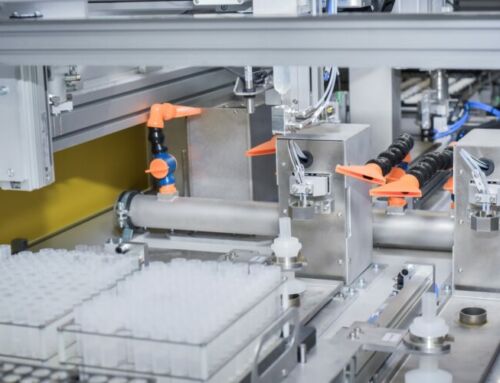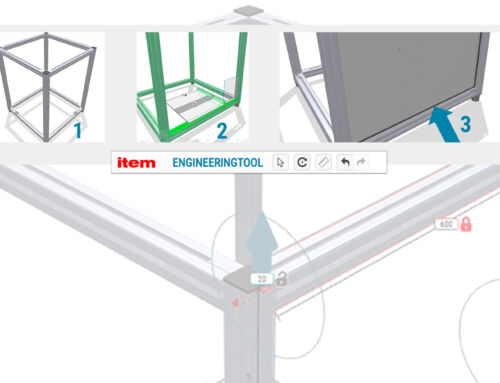It is now easier than ever before to uncover mechanical doping in cycling.
Doping is an ongoing issue in cycling, and is damaging the image of the sport. The International Cycling Union (Union Cycliste Internationale, UCI) is therefore at the forefront when it comes to developing countermeasures. Doping refers to both medical manipulation using erythropoietin (EPO) or similar substances and deliberate technical violations. Initially, the latter generally involved using a racing bicycle that weighed less than the minimum weight. The lighter bicycle was secretly replaced during the race, so that the rider would arrive at the finishing line on a legal one. The rapid evolution of e-bike technology has now given rise to another, more effective form of doping, however – motor doping. With the help of a miniature motor, dishonest cyclists can save themselves a lot of hard work. The UCI uses a mobile X-ray machine to keep an eye out for this kind of cheating. The technology has been developed as part of a transatlantic collaboration between HEITEC PTS (Germany) and VJ Technologies (USA). The German company (previously Erhardt + Abt), based in Kuchen in the Baden-Württemberg region, was founded over 20 years ago, and specialises in industrial X-ray technology.
Electric power for an illegal extra drive boost
Professional cyclists looking for a short-cut don’t use a conventional e-bike motor, which can deliver about 250 Watts. They only need the help of an extra 20 or 40 Watts to gain a minimal but decisive edge. The highly trained legs of professional cyclists can produce 400 Watts of drive on their own, so it is no wonder that such a small boost can make a difference. “It only takes a small motor that runs on mini batteries. These motors are generally hidden in the seat tube – that is to say, the part of the frame that extends from the saddle to the bottom bracket,” says Christian Abt, Managing Partner of HEITEC PTS. Activated by a little button, such a motor can allow cyclists to save energy during a climb, for example, enabling them to score points in the final section.
To make matters worse, there has previously been no easy way of proving this kind of cheating. With the number of lightweight materials available for constructing racing bikes, it is easy to compensate for the additional weight of a motor by using lighter components elsewhere. As a result, there is no discernible difference between the modified bicycle and a legal model when it is placed on the inspection scales. Metal detectors can’t pick up every trace of mechanical doping either, as the electric motor is positioned right next to the gears and pedals, where there is already a lot of metal. The same applies to thermal cameras, as it takes just ten minutes for the motors to cool completely.
Motor doping inspections are becoming more rigorous
In spring 2018, the UCI therefore unveiled its new tool in the fight against motor doping – a mobile X-ray machine. Weighing a total of two metric tons, the X-ray inspection equipment on wheels will soon be rolled out at the Giro d‘Italia, the Tour de France and other international cycle races, where it will conduct X-ray scans of riders’ bicycles at the start and the finishing line. The responsible mechanic pushes the bicycle into the X-ray cabin. This is where the profile technology of our MB Building Kit System comes in, forming the fixture that positions and fixes the cycle in place.
“For a start, we have been familiar with item for 20 years. On the one hand, we chose item because it just makes us so flexible. On the other, we are using a driven linear axis that enables us to achieve pre-set positions automatically. This kind of system solution from item, with everything coming from a single supplier, is hugely advantageous,” says Abt. Once the bicycle is inside the cabin, all the most important points are closely examined by the UCI inspector. These include the frame at each of the wheels and in the area around the bottom bracket. After the inspection, a seal is applied to the bicycle to clearly identify it.
A flexible approach to combating motor doping
Although there is now a proven method for combating motor doping, it doesn’t completely eliminate the potential for dishonest cyclists. While the bicycles – including the replacements – are strictly examined based on various strategies, there is no way of constantly monitoring what happens with riders at the rear of the field in their service vehicles and whether a replacement bicycle is manipulated after the inspection and then sent into the race. All the same, the mobile X-ray chamber from HEITEC PTS represents the best tool currently available to detect motor doping. The deterrent effect shouldn’t be underestimated, either. And what does the future hold? “Thanks to the aluminium profiles from item, we are extremely flexible. If we have to make modifications or handle a different kind of bicycle, the geometry might change, but that’s not a problem for us,” says Abt.
Do you want to keep up to date on innovative ways that item solutions are being put to use?
Then we have the perfect solution for you. Simply subscribe to the item blog by completing the box at the top right!









